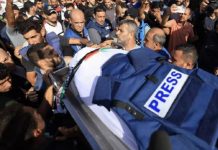Shefa’a Abdullah
More than three years into Yemen’s destructive war, a battle is shaping up for the port city of Hodeida, a lifeline for the bulk of Yemen’s population. Forces backed by the US-Saudi Coalition and the United Arab Emirates (UAE) are advancing on the port and may soon seek to make another failer push.
A sustained battle for the port will likely shut off trade and humanitarian aid access for a sustained period. Fighting could continue along the main city of Hodeida.
This would impede traffic from the port unless an agreement on access is brokered. Officials estimate that fighting for the city alone could displace hundreds of thousands of people and warn of a “catastrophic humanitarian impact”.
Hodeida is the entry point for most basic goods into the north, accounting for around 37 per cent of Yemen’s fuel and 69 per cent of its food imports via ship in 2018 to date, serving the country’s main populated areas.
Along with Ibb and Taiz governorates Yemen’s northern highlands are home to around 60 per cent of an overall estimated population of 27.4 million.
The UN says Yemen’s humanitarian crisis is already the worst in the world; some 22.2 million people are in need of assistance.
The battle for Hodeida is likely to be prolonged and leave millions of Yemenis without food, fuel and other vital supplies. The fighting will discourage rather than enable a return to the negotiating table. Yemen will fall even deeper into what is already the world’s worst humanitarian crisis.
When the coalition prevented ships from entering Hodeida port humanitarian organisations reported the prices for food and price increases of up to 100 per cent for fuel.
In the past, the coalition has regularly predicted that it would win its battles quickly and cleanly before adjusting its estimates when reality sank in. At the start of the war in March 2015, for example, Saudi officials forecast that the war would last only a few weeks.
In the same context, the official spokesman of Ansarullah, Mohammed Abdul Salam, confirmed Yesterday that the more the US-Saudi coalition on Yemen continuous, the more the capabilities of our Yemeni ballistic missile grows, so that it can strike in places not expected by Yemen’s enemy.




















